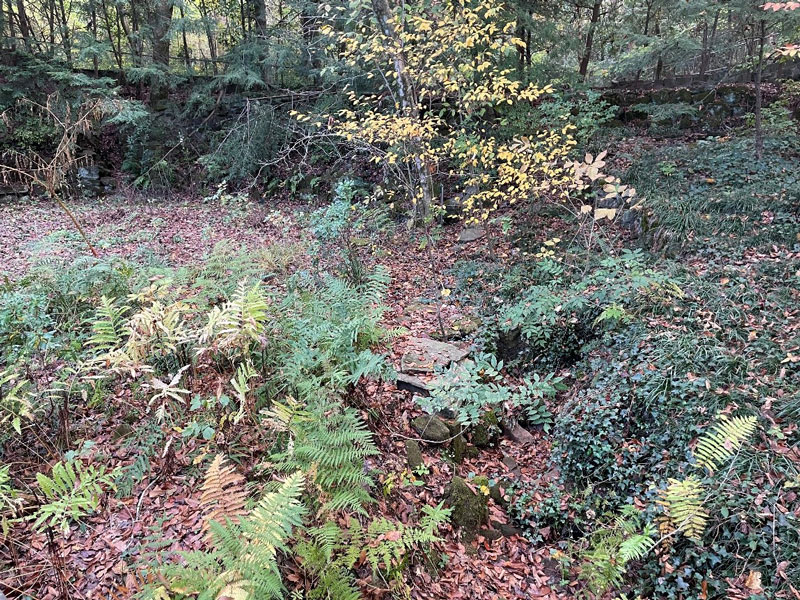Native Son: A Walk in the Woods
At the end of a 670-mile trip crossing the mighty Mississippi and cutting through the heart of those fall-festooned forests of eastern Alabama is Atlanta, Georgia. Aside from a few gargantuan skyscraper zones, ATL really is “The City in a Forest,” with one of the nicest urban forests anywhere – top notch. A tip o’ the hat to all the folks who maintain all those trees.
Parking beneath the trees at the Fernbank Museum, I got a pretty good vibe from the get-go. Once I got around the corner, the entrance to the museum came into view – and what a view!
It’s like a circus of cool stuff, even before you open the door. Giant torch-like sculptures, full-scale dinosaurs, giant caged stone orbs, and the nicest quad set of manicured hollies I’ve ever seen. And I can’t show you any photos I took because I didn’t take any. Blew right past it all because, well, I had some other things on my mind.
“Why didn’t you just take some pics on the way out?” you ask? I was completely intoxicated with DDF — Dendrological Delirium Fever. I’ll explain.
Behind this excellent natural science museum, another world awaits. You enter it through a delightful series of wooden decks, boardwalks, kids’ play areas, and surprisingly elegant wooden sculptures. All of this sets the stage for the main feature of a 65-acre, old-growth Piedmont forest – the likes of which is seldom seen in the South. Shall we take a walk?
Walk-through sculptures set a serene, reverent mood before entering the forest.
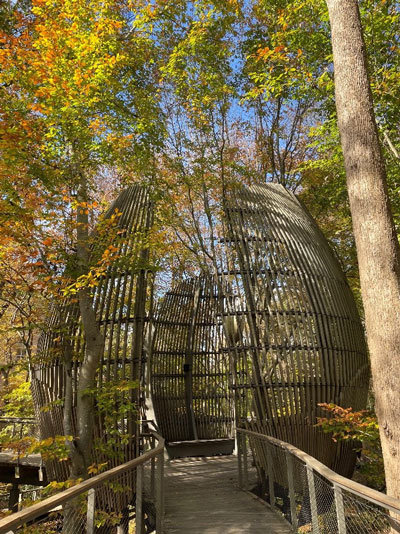
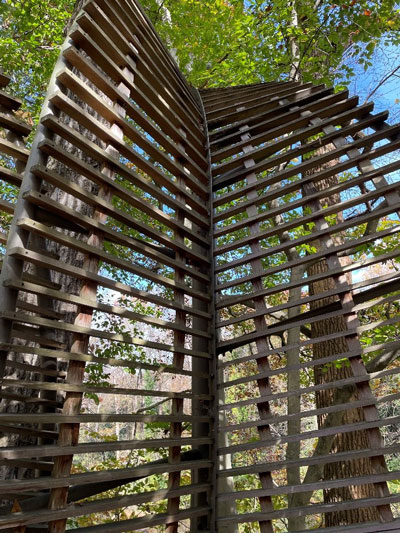
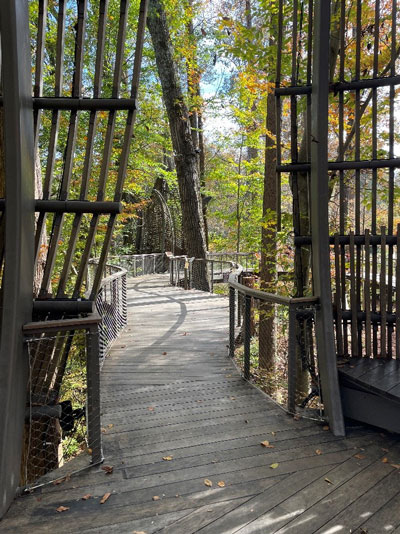
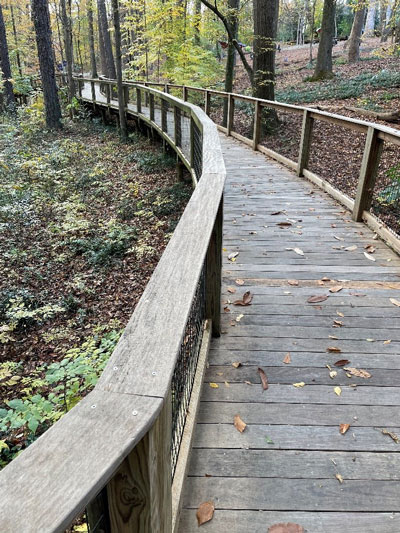
Take a deep breath and crane your neck! The tallest trees in this forest of giants are tulip poplars (Liriodendron tulipfera) and white oaks (Quercus alba), topping out at 150 feet tall. While I have seen similar-sized specimens of both before, what really got me was a 140-foot loblolly pine (Pinus taeda)!

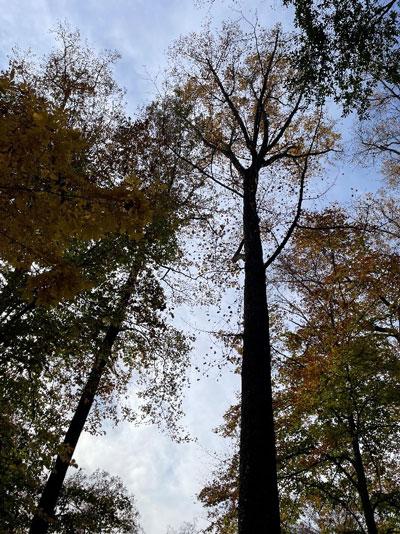
I came across a few small specimens of bigleaf magnolia (Magnolia macrophylla), famous for leaves up to 30 inches long. Its large blossoms, chunky cones, and those delightfully huge, deciduous leaves held so gracefully all summer make it a favorite of even crusty old horticulturists.
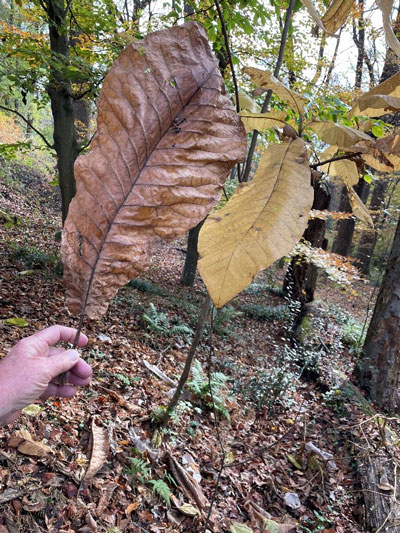
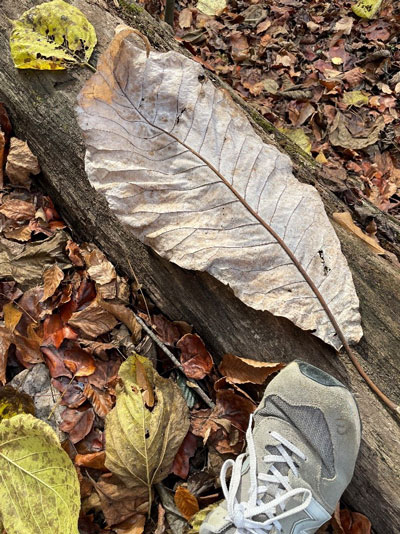
Well-maintained pathways make accessing the heart of this magnificent forest easy. Old-growth forests have many layers, from ferns and rhododendrons down low to dogwoods, pawpaws, and plums a bit higher, to maples and magnolias higher still, and up to the big boys – beeches, oaks, and tulip poplars – up top.
Of course, this old-growth forest contains thousands of species of life, from the flora and fauna we easily see to the mind-altering complex of fungi, bacteria, algae, and microorganisms in the soil. The soil itself is composed of several distinct soil horizons, each of which accommodates the needs of certain organisms. Is that just flat-out cool, or what?
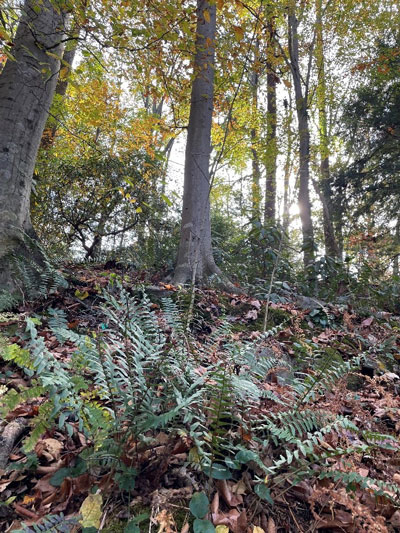
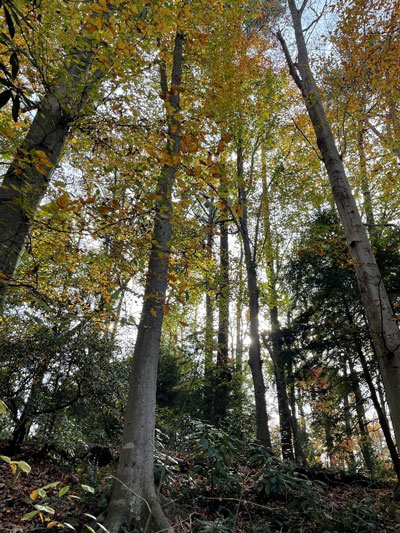
Get up close and personal with American beech (Fagus grandifolia) and pawpaw (Asimina triloba) alongside the excellent and stroller-smooth asphalt paths.
I just loved this one beautiful, natural stair that was carefully enhanced, instead of paving over it. And yes, there is good signage if you wanted to avoid the stairs. Three loops: 30/60/90 minutes, respectively.

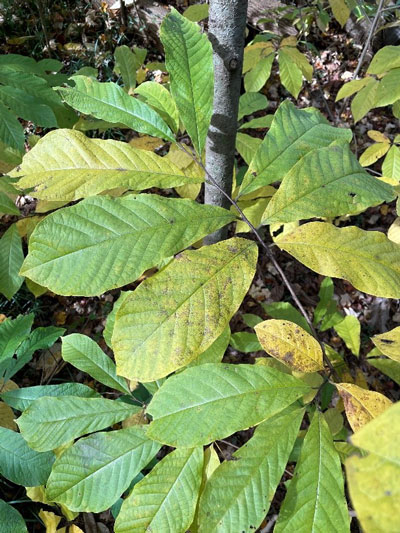
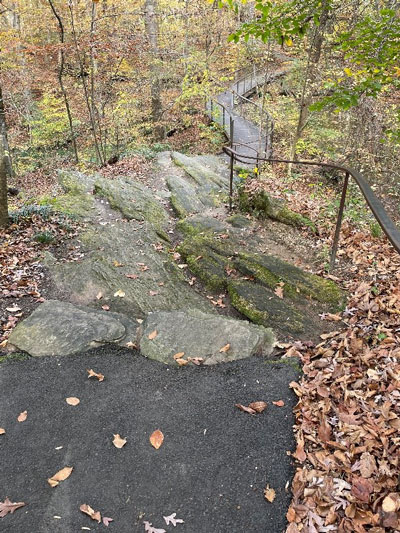
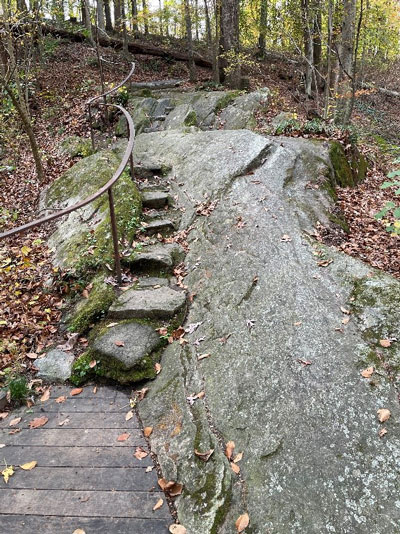
The American beech trees in the Fernbank Forest are simply spectacular! There are many specimens well more than 100 feet tall here, some displaying some fancy inosculation, others bearing the scars of inconsiderate guests, but all are elegant.
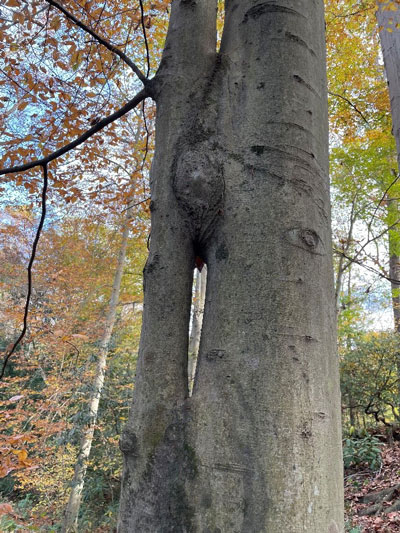
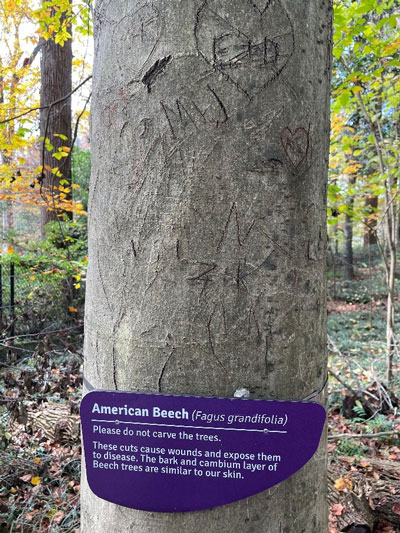
Buttressed roots are everywhere, but more so on steeper slopes. As the bark sloughs off this fallen giant, the spiraling wood beneath it is revealed. While it is not uncommon to find old trees of many different species with this characteristic, the precise reason why some trees do it and others don’t has so far evaded scientific explanation. Who doesn’t love a good mystery?
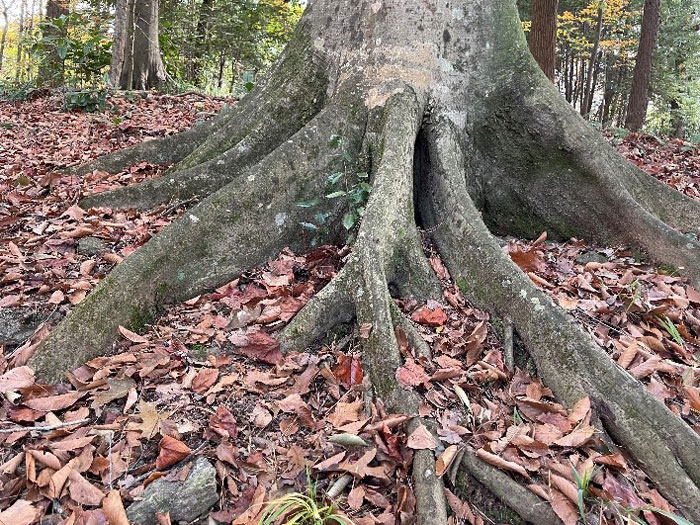

Native rhododendron and wild ginger grow freely on the forest floor. (Back at the Heard Natural Science Museum ‘bout 1997, the mention of “wild ginger” always brought a delighted smile to the faces of Dr. Harold Laughlin and Don Herrington, clean-minded men of science.)
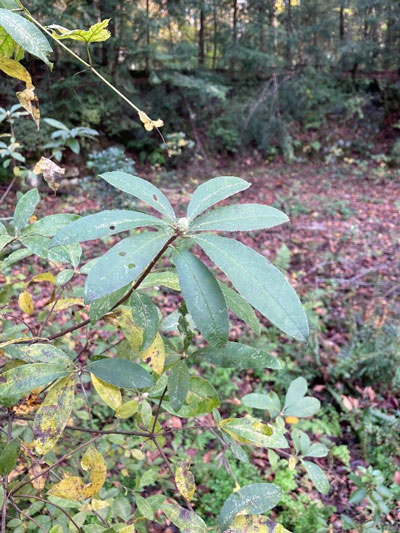
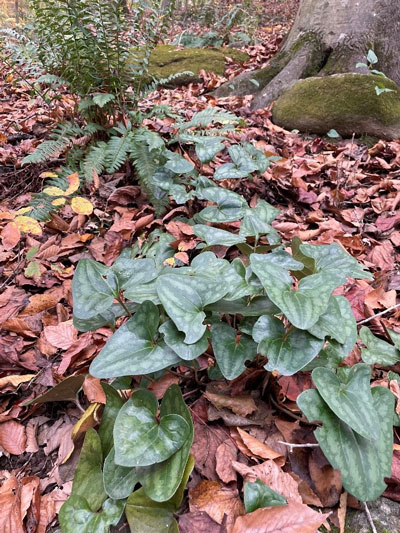
The native dogwood (Cornus florida) leaves displaying rich fall color. Sometimes we forget how cool bark can be. I’m not positive, but this looks like eastern persimmon (Diospyros virginiana) to me.


I encounter a small clearing in the midst of this magnificent climax forest. One hundred years ago, this parcel of land was obviously someone’s garden. I deduced this by the astutely observing an old stone wall at the back right of this small dell … and brilliantly detecting a few grass-shrouded stones that lay in a perfect curve along the ground, with bits of mortar still attached. That, and there was a nice sign nearby that told the story.
So all that got me to thinking about something someone said to me almost twenty years ago, concerning the amazing Chandor Gardens in Weatherford, Texas: ”There was nothing there until Chandor built his garden.”
For cryin’ out loud, no little piece of Mother Earth was ever “nothing.” Cattle pasture. Native American land, home to bison and mastodons. Under ice. Under water. Under dinosaurs. Under ancient ferns and horsetails. Under the murky soupe de vie….
And if you replay all that “nothing” stuff backwards you will return to this moment in this rare place. Hard to believe it exists, right here in the middle of Atlanta. The thick, oxygen-rich air, the constant chirps of birds calling each other, the mid-autumn colors fluttering all around, towering giants, gently gurgling stream, mushrooms everywhere, and, to the delight of old plant guys, wild ginger.
_______________________________________________________________
Just so you know … the Longview (Texas) Arboretum & Nature Center is OPEN! Hours are 10am-5pm, Wednesday through Saturday; Sunday 12 noon-5pm. Come out and see us! And bring your own brand of Zen! 903-212-2181 Longviewarboretum.org.
I need a road trip! Let me know if you’d like me to come and speak to your group sometime. I’m low maintenance, flexible, and you know I like to go just about anywhere. No city too big; no town too small. Just send me an e-mail at stevenchamblee@yahoo.com and we’ll work something out.

